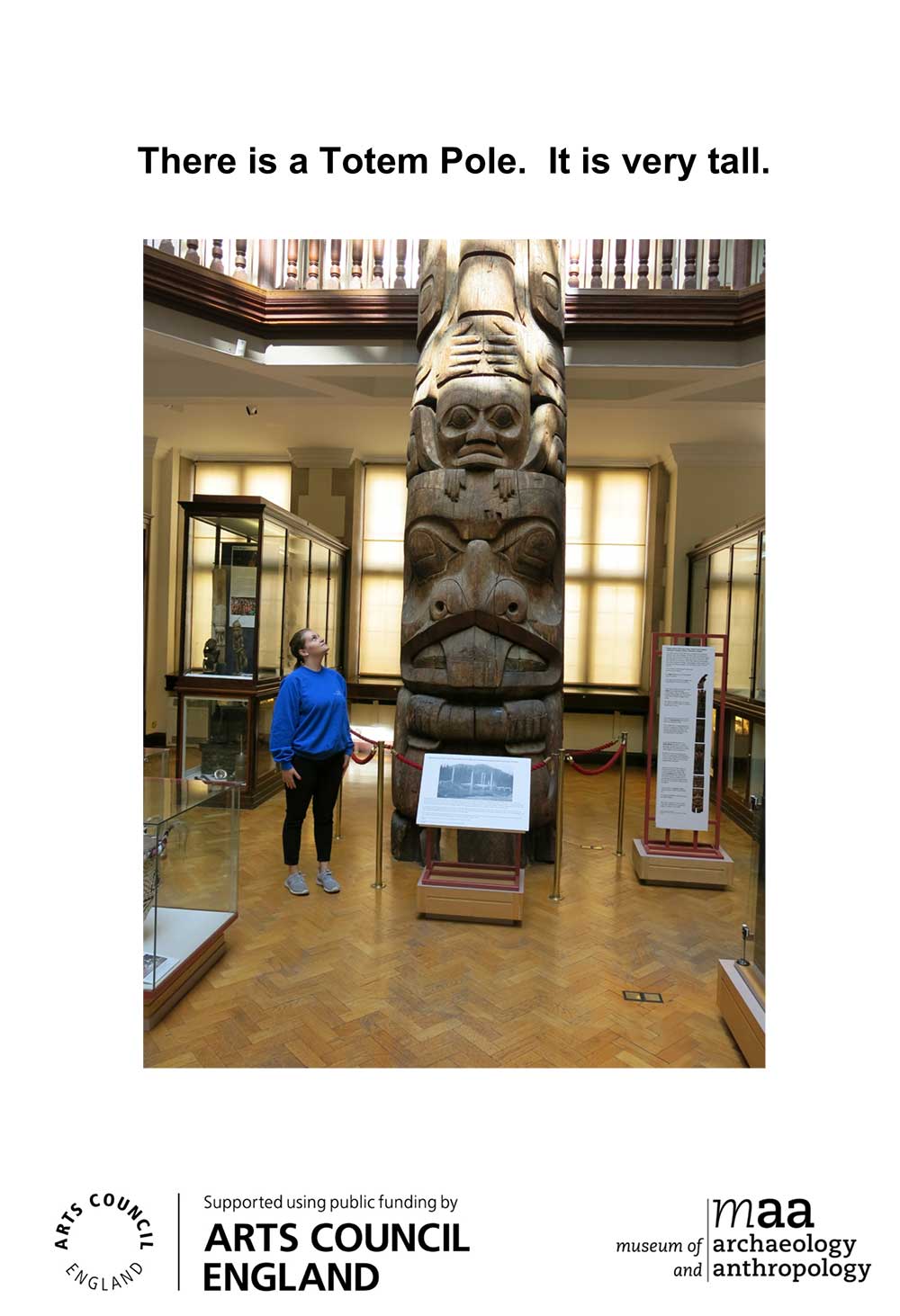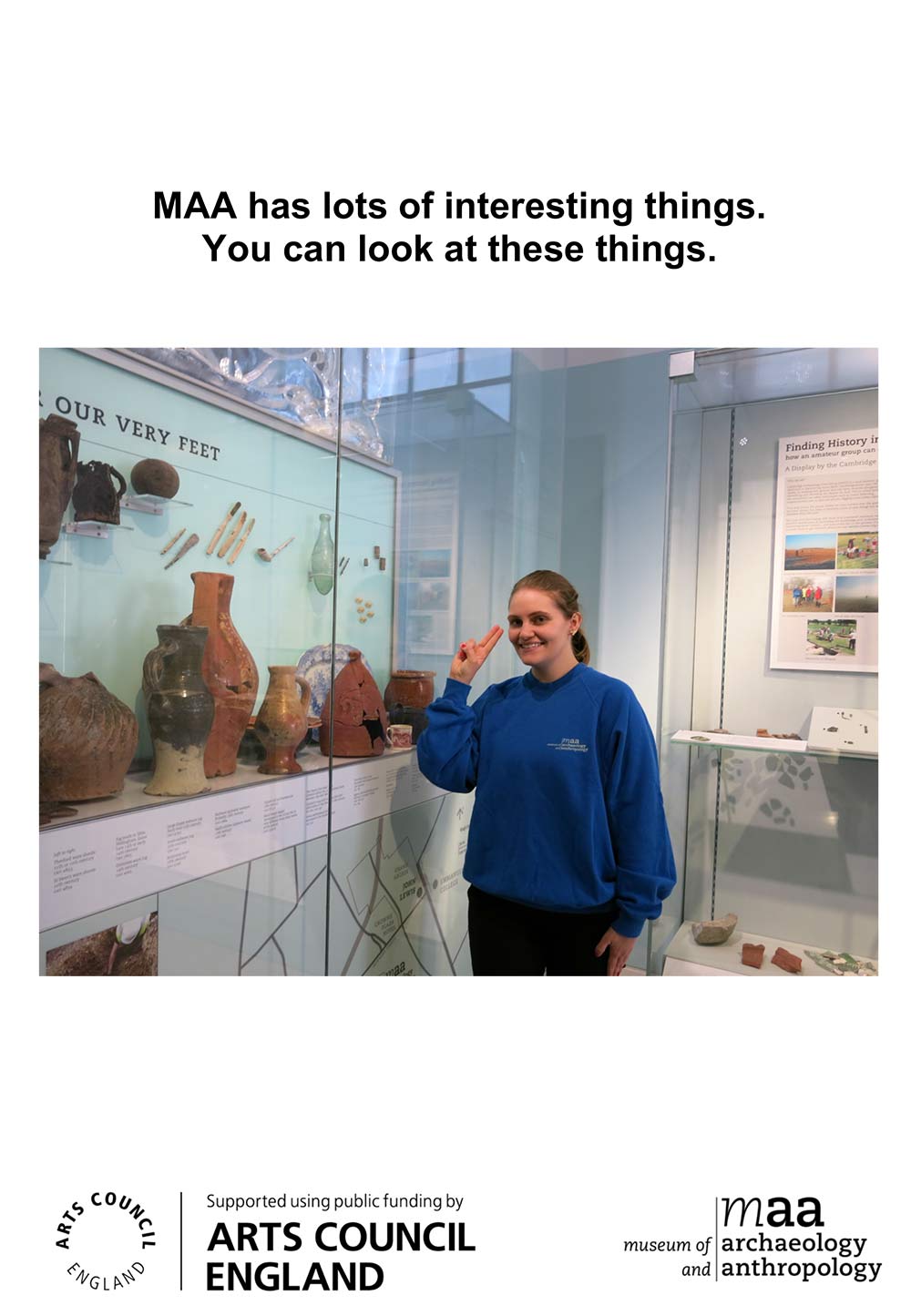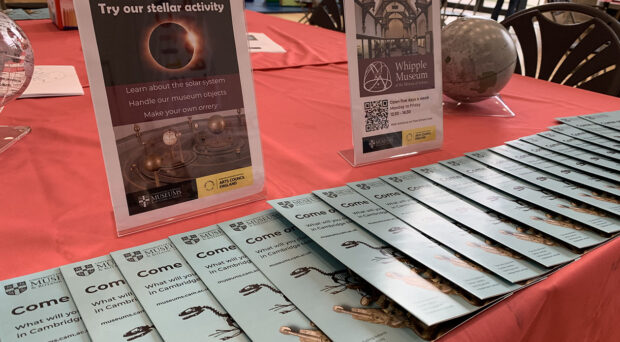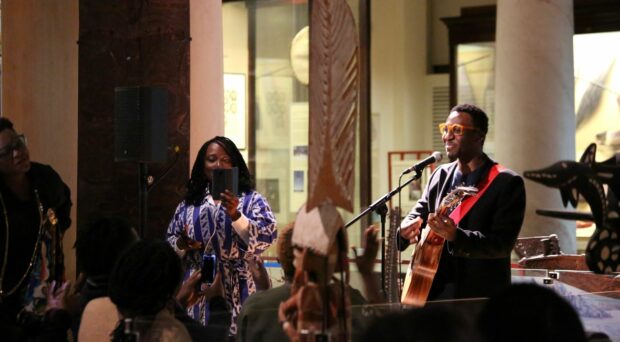With support and input from families and professionals dealing with autism on a daily basis, the Museum of Archaeology and Anthropology has been working on a project to become more accessible to those on the autistic spectrum. This blog post explores the importance of, and the journey to, becoming more autism accessible.

While most people have heard of autism, they may not realise that 1 in 100 people have a diagnosis. Together with their families, this means 2.8 million people in the UK are affected by autism. But public spaces, through a lack of awareness and planning, are often inaccessible to those with autism and their families. Museums have a responsibility to reach this broader community, be inclusive and offer equal opportunities to our very diverse (including neurodiverse) population.
One of the biggest challenges facing the practical application of autism accessibility is the sheer range of the spectrum. The autistic spectrum is broad, from the child with Asperger Syndrome who can be talkative, intelligent and enthusiastic, desperate to know more about a specific topic; to the non-verbal individual with severe learning disabilities who rarely manages to engage. There are many variations between these polar ends and no two people, autistic or otherwise, are ever identical.
Despite this, people on the spectrum do share challenges in the areas of communication, social interaction and social imagination, and they often struggle with different perceptions. They have difficulties processing sensory information (sight, sound, smell, taste, touch, balance and body awareness) which can lead to a sensory overload presenting as a shutdown or meltdown. This is where we can facilitate and enable the individual and their family. There are many easy and low-cost/no-cost approaches that can help with these challenges and make our public spaces more welcoming.

Preparation and flexibility are key to improving a family’s enjoyment. At MAA we now have a Pre-Visit Information page on the website addressing the concerns which typically confront a parent/carer and enables them to be better prepared for a successful visit. The Visual/Social Story, also accessed via the website, acts as a ‘pre-visit record’ for the child with autism. This is a visual form of preparation not dependent upon language skills. It helps to lower the uncertainty and anxiety that accompanies a visit into an unfamiliar environment. Parent and carers can print the pages of the Visual Story that are relevant to their individual situation. This flexibility addresses the diversity of the spectrum.
We also have a Sensory Basket containing sensory aids and toys, such as fidget toys, a weighted snake to help with body awareness and balance, and ear defenders for those who struggle with noise. These sensory aids are particularly important in environments that do not have a quiet space available for moments of distress and anxiety. Additionally, an individual can create their own portable ‘sensory bubble’, restoring their autonomy and giving them control over their visit. They are encouraged to give feedback via an autism friendly smiley face/sad face method.
Additionally, our Front of House and Education/Outreach teams have autism information packs and will receive guidance on how to support families with autism. Often an informed and flexible approach, combined with a little acceptance and empathy, can make the biggest difference.
We do have an advantage. Museums are by their nature a magnet for unique people with exceptional talents and passions, and this often makes them a far more enabling environment than the ‘real’ world; including classrooms, which are geared to neurotypical capabilities. The visual and kinaesthetic approach offered by museums is often just the kind of environment that a child with autism might thrive in, if only we would let them.
Autism is full on. There is no off switch or volume control. Autistics cannot turn their autism off, or down, even for a given period of time, but they do have to live with it. All day, every day. This shouldn’t be a barrier to them participating in life. A little latitude is required if we are to welcome a sector of our society that is still underestimated and start embracing the aptitudes that they offer.
The children that are visiting our museums today will not grow out of autism, but they will grow up – into adults with autism. The person that they become and what they have to offer as an adult on the autistic spectrum will depend upon many factors, including their experiences as a child on the autistic spectrum, and that is something that we can all positively contribute towards.
7 Things You Can Do Today To Be More Autism Accessible:-
1. Different Abilities
Try viewing autism as a different ability rather than a disability. It’s an emancipating approach, and not just for the child.
2. See the Child
A child with autism is just that, a child who happens to have autism. Autism is not all that they are. They are still growing and developing and becoming. Lose sight of the child and you lose sight of the adult that they may become.
3. Trust the Family
Trust the family to know what works for them. Parents and carers of autistic children know their child’s limitations, and have learnt what works for them and what doesn’t. Don’t be afraid to ask if you can help, but if they decline an offer of help, respect it – there will be a good reason.
4. More than One Set of Needs
It is not unusual for families to have more than one child on the spectrum, or with another disability. It is worth remembering that families are sometimes coping with more than one set of needs.
5. Little Heroes
Autistic children sometimes have non autistic siblings who often have their own needs and interests overlooked. They are frequently the unsung heroes within families dealing with autism. Take the time to ensure that they don’t feel any less special.
6. Say What You Mean
Not all autistic children experience language delay. If a child has Asperger Syndrome they may be quite chatty. However this is often misleading as they can be more vulnerable than their eloquence might suggest. They also interpret language literally and, for example, cannot grasp idiomatic expressions. If you ask them to slow down by saying ‘Hold your horses’, they are likely to think that you are an idiot as they came by bus. Likewise if you ask them why they are so quiet by asking ‘Has the cat got your tongue?’, they are going to start wondering where the cat is, and check that their tongue is still in their mouth. Speak literally and say what you mean.
7. Repetition, Repetition, Repetition
Whether you are communicating verbally or demonstrating an activity keep it simple and be prepared to repeat it, several times. Autistic children process information at a much slower pace. This does not necessarily mean that they cannot process it, just that they need more time. Be patient and allow extra time, including between repetitions so that they are not overwhelmed by a volley of communication.







